According to the New York Times, "Historic Rice Plantations Of South Carolina," by Logan WARD, on 20 October 1996 -- GROWING up in South Carolina, I had driven across the Waccamaw and Pee Dee Rivers where they converge near Georgetown dozens of times. Mounting the bridge that spanned them always meant that we had finally reached the beach. But before Myrtle Beach became a mecca for golfers and sun-tanners, the Grand Strand's swampy southern tip was famous for its rice plantations; by the 1850's, Georgetown County was the western world's top rice producer. Back then, the rivers were as essential to the rice culture as today's highways are to tourism. Broad and smooth, they floated barges heaped with Carolina Gold, a rice variety prized in Europe, making rich the few dozen planters who lived on their banks.
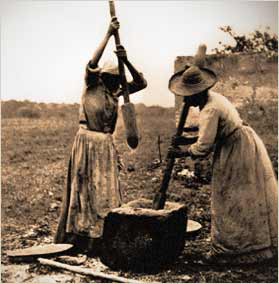
It was fitting, therefore, that on a daylong tour in March of four of the region's historic rice plantations, we traveled by boat rather than bus, away from the Grand Strand's traffic and gawking crowds. Each of the white Greek Revival plantation houses on our tour faces the water; to drive up is to miss the more spectacular first impression.
There were 79 passengers on the tour, sponsored by the Palmetto Trust for Historic Preservation, a Columbia-based nonprofit organization, and history and architecture enthusiasts had driven from Charleston, Columbia, Florence and other South Carolina cities. I was with family -- wife, in-laws, parents and brother. Several other out-of-staters also managed to reserve tickets, despite the limited supply and high demand.

The Palmetto Trust (named for South Carolina's state tree) sponsors only two such events each year, in the spring and fall, and this was the first ever by boat. The four plantations we visited -- Arundel, Exchange, Chicora Wood and Arcadia -- are privately owned and rarely open their doors to sightseers. Although this October's tour promises to be equally rewarding, the plantations visited will be different.
By 9 that morning we were cruising up the Waccamaw River, helping ourselves to coffee and muffins and milling around the 50-foot-long, open-sided boat to meet the other guests. The weather was especially warm and sunny for mid-March. Capt. Bob Green, at the helm, skirted a group of shad fishermen in small motorized boats, who were laying long nets across the river. Beyond them, lining the swampy bank, were wide-hipped cypress and tupelo trees draped with Spanish moss. Cormorants preened on dead branches, and the occasional osprey circled low over the shallows.
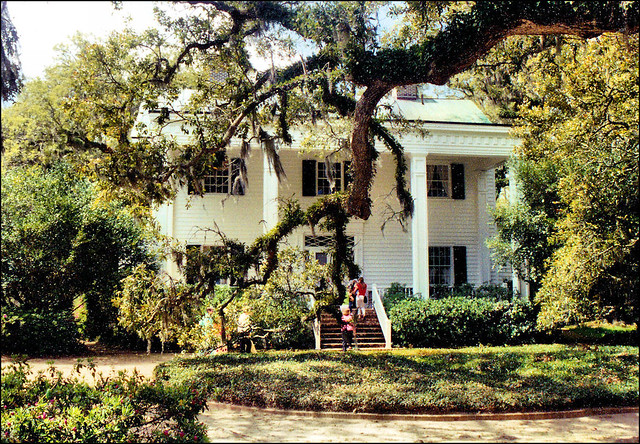
Arundel Plantation, South Carolina
According to the lecturer, Charles Joyner, a local historian and author who spoke above the engines' whine using a small public-address system, this entire expanse had come full circle -- from cypress swamps to rice fields and back again. In a remarkable feat of human labor and engineering, African slaves cut thousands of acres of trees, dug stumps and drained the land by building a series of levees, canals and flood-gates. Although the wooden sluices that line the banks are now rotted and swallowed by marsh grass, they provide a glimpse of what was but a brief mastery by man of the landscape.
Our first stop was Arundel Plantation, which sits on the dry western bank of the Great Pee Dee River. To get there, we veered off the Waccamaw and onto a narrow creek that wound its way through thick stands of trees. As we approached, the forest opened to reveal a white two-story manor set back among live oaks so big their limbs rested on iron braces.
''Don't ask me how old the trees are,'' said Lou Quattlebaum, owner of the property since 1955, as she addressed the visitors from atop her front steps. ''No one can agree. Some say 200 years, others 800.''

Arundel Plantation Slave Cabin
Following her brief historical account, we had an hour to wander in and around the late-19th-century house. Although none of the furniture had belonged to the 1,200-acre estate's original owners (''the only thing they left in the house was a butter churn''), it is filled with beautiful four-poster beds, side tables and other period pieces. I stepped outside, where a handful of white outbuildings with red tin roofs are scattered among the oaks and magnolias: the commissary, with bars on the windows to protect the food; the smokehouse, and a well-kept carpenter gothic slave cabin with board-and-batten siding, the only one of 50 still standing.
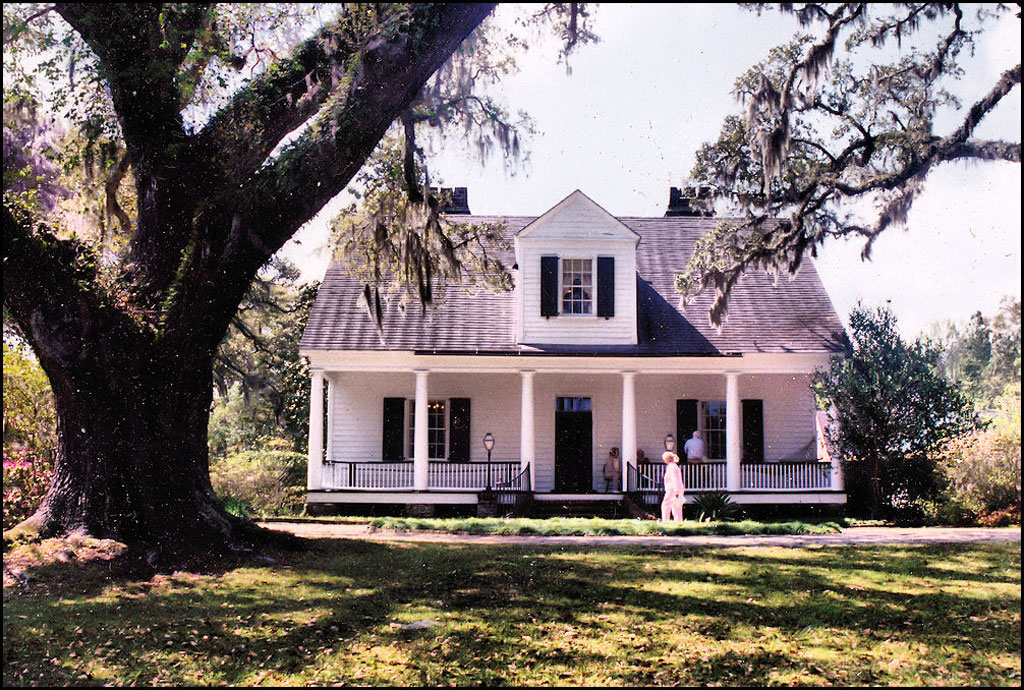
The Exchange Plantation
We continued up the Pee Dee to Exchange Plantation, a more modest cottage that dates to 1790. It, too, is surrounded by stately oaks, which shade the house and give it a warm, welcoming feel. The view from its six-columned, recessed front porch ends abruptly across the river, where a cypress forest stands. According to Smith Ragsdale, the middle-aged son of the current owner, at the height of the rice farming you could see Brookgreen Plantation three miles away, an amazing fact considering how dense the swamps are today. The planters left no trees standing, he said, because hurricanes and other storms could uproot them and rupture the dikes.
Strolling through Exchange's wood-paneled library and billiard room, I came eye-to-eye with at least half a dozen different stuffed-and-mounted animal species. It turns out that sport hunting, in a roundabout way, saved many of these historic homes. Raising rice was too labor intensive to be profitable without slavery, and tractors bogged down in the wet soil. After the rice culture died around the turn of the century, many planters sold out to ''Yankee'' businessmen, who used the estates as hunting lodges for entertaining clients. Today, most American rice is grown on higher ground in Texas and Arkansas.

The Chicora Wood Plantation
The next stop, Chicora Wood, served as a good example of the rice planter's plight. Welcoming us to what is his second home, Jamie Constance read a passage from Elizabeth Allston Pringle's autobiography ''A Woman Rice Planter,'' chronicling her struggle to maintain the family plantation after her father, a former South Carolina governor, died bankrupt.
Constance and his wife are outsiders, Californians who bought and meticulously restored Chicora Wood in the 1980's. Each of the 18 heart-of-pine columns supporting the wrap-around piazza is immaculately painted white. The furnishings -- from marble mantels to carved armoires to shelves of the Allstons' original books -- elicited oohs and ahs from an approving crowd.

Chicora Wood's Slave Cabin
It was a dream house, down to the finest tree swing I have ever encountered, a wooden plank chained 20 feet out on the arm of a mammoth oak. Giving it a test run, my wife, Heather, kicked and tucked her legs for momentum, arcing over a 10-foot-wide azalea hedge.
We ate lunch beside Chicora Wood's old rice mill on the riverside lawn. I was secretly hoping for a rice dish, like chicken bog, the low-country jambalaya I had not eaten since I was a boy. But I gladly gobbled down the turkey sandwich, fruit salad and iced tea our tour leaders provided.
Sprawled out beneath the oaks, I imagined myself the owner of such a place -- not some antebellum planter, but a modern-day restorer like Jamie Constance, with a mind for history as well as an eye for design. Of course, I would have to escape the heat, humidity and mosquitoes of summer; Elizabeth Allston Pringle, herself, wrote that ''to remain here a summer will be suicide.''
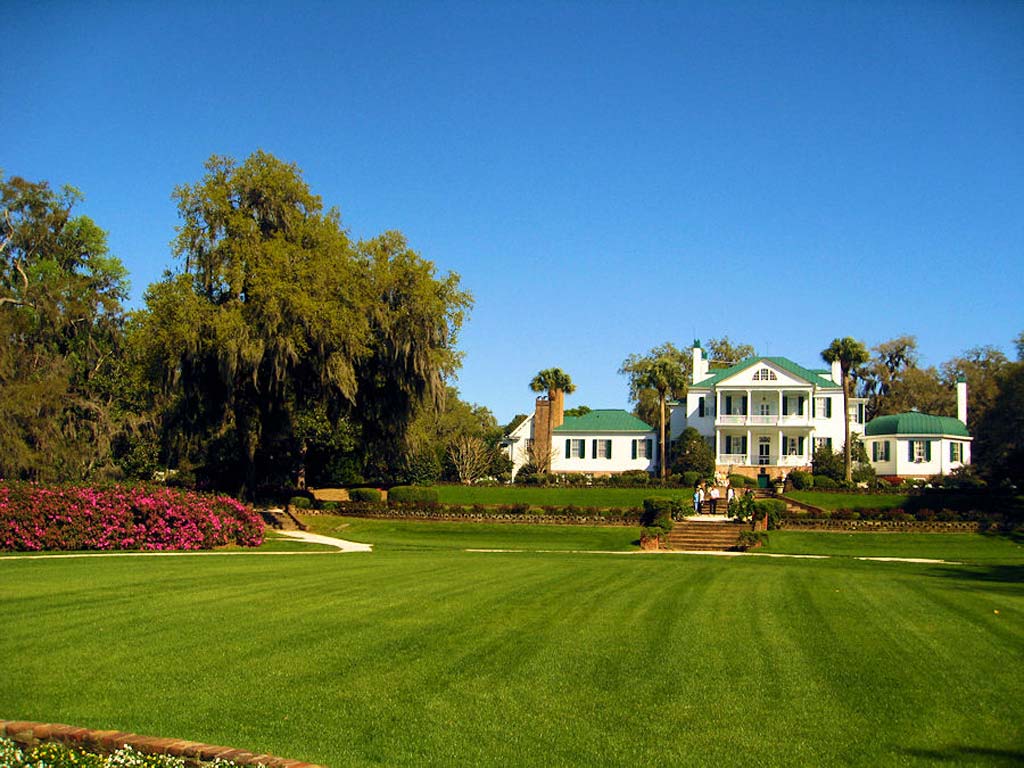
The Arcadia Plantation
THE final stop, Arcadia Plantation, is owned by Lucy Vanderbilt Pate, a descendant of Commodore Cornelius Vanderbilt. It does not directly abut the river, sitting on high ground about a quarter of a mile inland from the Waccamaw. Leading up to it is a long, narrow canal, and after an hour's cruise downriver from Chicora Wood, Captain Bob steered our boat gingerly between an old gate at the canal's mouth, leaving no more than six inches of leeway on either side. At its end is the green-roofed plantation house, towering like a Dixie Xanadu above well-manicured gardens.
The grandest in scale -- with its double piazzas, strong triangular pediment and two-story octagonal wing -- the pristine-white Arcadia also appeared to be one of the most lived-in of the houses, a treat for those of us curious about what's beneath the magazine sheen of most home tours. Lulu, as our hostess is known, led us through the dingy basement, pointing out a kitchen, storage space and a room once used as a jail, then up the back stairs to the living room.
While we shuffled from room to room, afternoon tea was set on the front patio, with strawberries, scones and deliciously un-fat-free shortbread. We snacked and chatted beside the blooming camellias. A bottle of bourbon and some fresh mint stood beside the tea, and, needing no instruction, a few guests mixed mint juleps. Just as fitting, perhaps, were the insects that emerged just as the sun sank, but they seemed a reasonable trade-off for the day's excellent weather.
When the bugs grew overbearing, we thanked our softspoken hostess and hurried to the boat. Captain Bob cranked the engine, but it quickly overheated. Mud from the shallow canal had clogged something or other. The bugs had followed us, and darkness was falling fast.

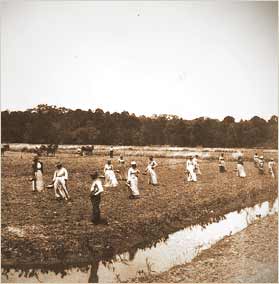

Wοah! I'm really loving the template/theme of this website. It's
ReplyDeletesimρle, уet effeсtive. A lοt of timеs it's very difficult to get that "perfect balance" between user friendliness and visual appeal. I must say you've ԁοne a great јοb
with thіѕ. Ӏn addіtion, thе blοg lοads vеry fast foг me on Ιnternet explorer.
Εxcellent Blog!
my weblog :: Things Women
The pad is warmed, releasing the scent in the air for up to 8 hours.
ReplyDeleteSpray on bed linens or bathe in lavender oils or soap to
reduce stress prior to bedtime. One of the best places to find casual sex partners is online.
Stop by my web site: vaporizer
Hello! I just read this information and i can tell you that this article is useful. Thank you for sharing it.
ReplyDelete